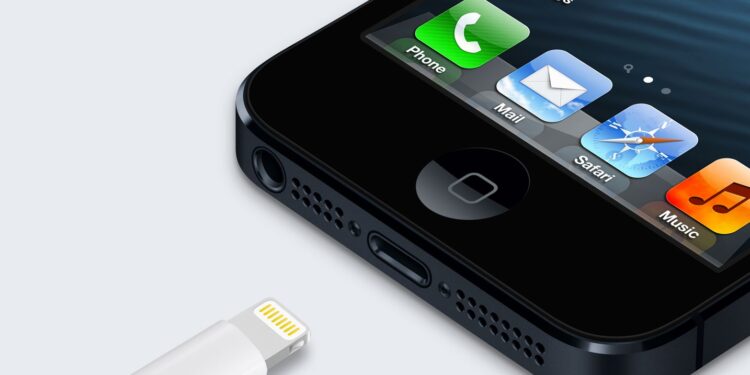Chief Executive Officer of Apple, Steve Jobs attends a press conference in central London, 18 September 2007. Apple announced here Tuesday that Britain would be the first European country to get its much-vaunted iPhone, when mobile phone operator O2 launches the gadget on November 9. Apple chief Steve Jobs told a London press conference that O2, owned by Spain’s Telefonica, has won an exclusive contract to distribute the iPhone in Britain for “cultural,” rather than economic, reasons. He said the iPhone would retail in Britain at 269 pounds (387 euros, 536 dollars.At long last, Apple is killing its proprietary Lightning port in the iPhone 15 and embracing a charging cable that’s compatible with non-Apple products. That’s one less extra cord cluttering your nightstand.
But the move, hastened by a European regulatory mandate passed last year, is a largely symbolic measure that comes years after most other gadgets switched to USB-C. And it won’t do much to shrink the mountains of e-waste piling up around the globe.
“I would classify the EU law and Apple as an evolution, not a revolution,” says Marian Chertow, a professor of industrial environmental management at the Yale School of the Environment.
An attendee looks at the brand new Apple iPhone 15 during an Apple event on September 12, 2023 in Cupertino, California. Apple revealed its lineup of the latest iPhone 15 versions as well as other product upgrades during the event.
Apple is set to unveil the iPhone 15
When the European Commission passed the directive last year, it cited two motivations: First, everyone agrees that it’s super annoying to have so many cables lying around. Second, having a common charger across devices — whether they’re made by Apple or Samsung or Garmin or whoever — would “significantly reduce electronic waste.”
Apple initially pushed back, of course, partly because selling extra Lightning cables made it lots of money. But it also said the waste argument was misguided, and that the promise of wireless charging would make the cable issue moot. (Still, the company ultimately said it would comply with the common cable rules.)
Retiring the Lightning cable could even generate, in the short term, a surge of e-waste as iPhone users toss their useless Lightning cables in a drawer. (Which, to be clear, isn’t recommended. Apple says it has a “robust” recycling program where you can bring in used chargers and cables. You can also look for a local e-waste recycling center or Best Buy store for environmentally friendly options.)
Big-picture, though, the impact on the mountains of global e-waste will likely be minimal.
There are about 66 million tons of electronic waste generated each year, says Ruediger Kuehr, head of the United Nations Institute for Training and Research in Bonn, Germany. Charging cables, he said account for “a few hundred thousand tons.”
Lightning cable and Apple logo on iPhone are seen in this illustration photo taken in Krakow, Poland on September 25, 2021.Apple could be about to make the biggest change to the iPhone in 11 years
“When we look to the pure numbers, it’s close to nothing,” Kuehr said. “But we nevertheless think it’s a very important step in order to make people … aware of the issue we are facing.”
E-waste is a growing problem that has yet to enter the mainstream consciousness. Most of it ends up where it shouldn’t — in our closets and junk drawers — which means more materials such as copper, gold and platinum have to be mined to produce new products.
“You can make money out of it, but you have to really do a lot of steps,” Kuehr says. “This is not understandable for the consumer in comparison to all the other waste streams.”
Nearly 80% of all e-waste generated around the globe is not properly treated, he said.
Whether the EU rule actually reduces waste is beside the point if it can push Apple and other manufacturers to help close the loop by making it easier to refurbish and recycle old products.
And to Apple’s credit, the company has been “a leader in scraping off rare earth metals from its reuse pile to recover these expensive materials,” Chertow says, noting that last year Apple said it was reusing more than two-thirds of the aluminum it needed. “These days, waste experts find that “reuse” is most often a better path than recycling as more can be recovered






